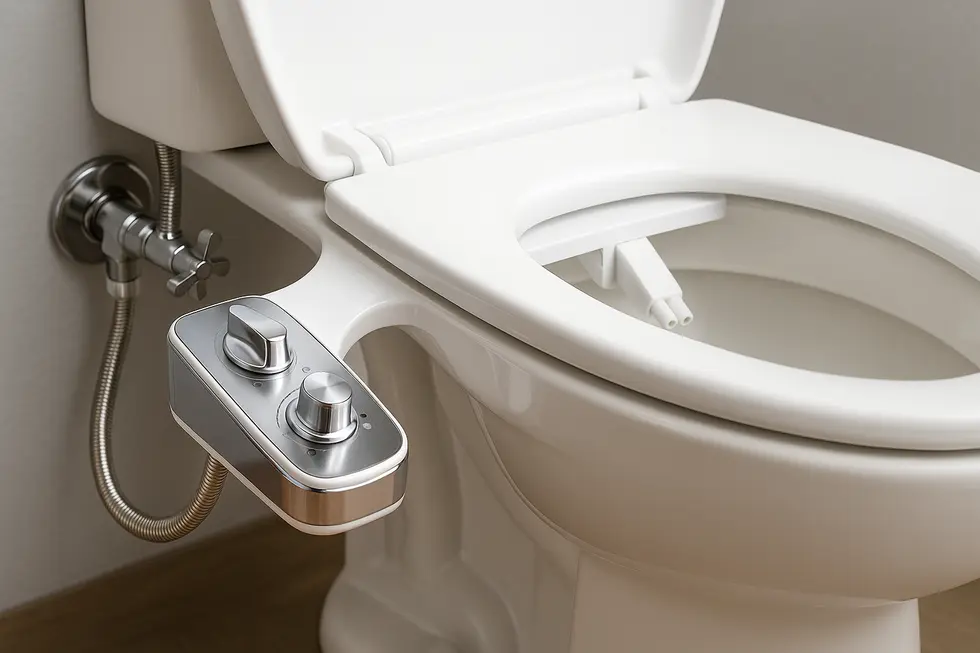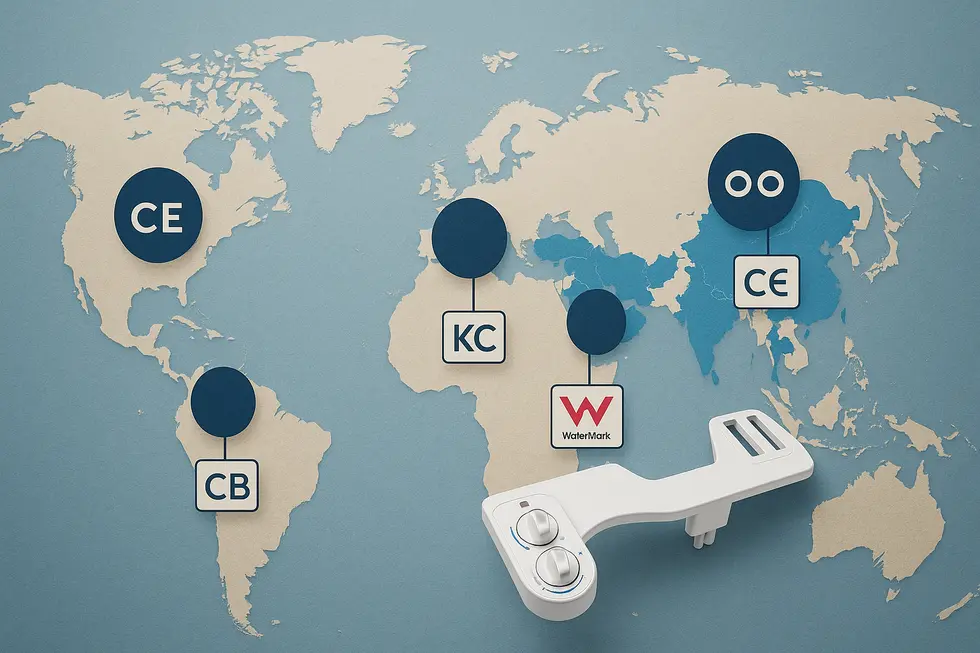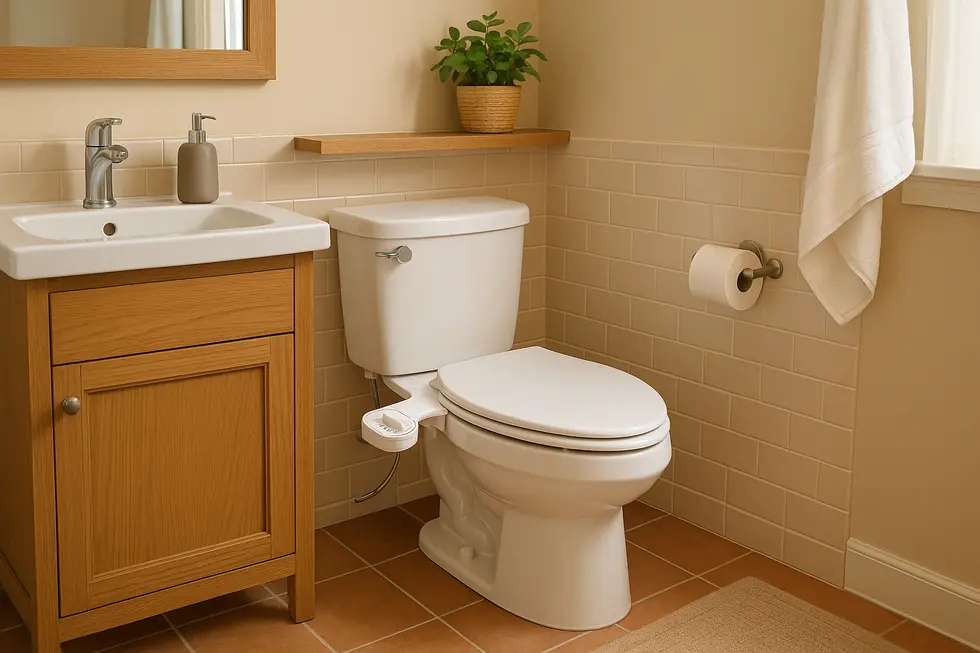Bidet Seat
Optimal Hygiene: Exploring the Best Non-Electric Bidet Systems for Family Use
In a world where personal hygiene and sustainability are pivotal, non-electric bidets have emerged as a practical solution for families aiming to enhance cleanliness while minimizing environmental impact. These ingeniously designed devices utilize water pressure from your home to deliver a refreshing and efficient cleaning experience. As families seek cost-effective and eco-friendly alternatives to traditional toilet paper, understanding the technological distinctions, economic advantages, and market dynamics of non-electric bidets becomes crucial. This article delves into these aspects, providing a comprehensive overview that guides families in making informed choices. Each chapter elaborates on key facets, from design intricacies to societal impacts, helping you grasp the tangible benefits of integrating the best non-electric bidet systems into your home.
Engineering Excellence: How Mechanical Bidet Attachments Deliver Plug-Free Precision

Behind every highly rated non-electric bidet is a deceptively simple hydraulic system that transforms household water pressure into a finely controlled cleansing spray. The journey starts at the cold-water shut-off valve, where a chrome-plated T-adapter—sized to the standard 3⁄8-inch supply line—diverts a fraction of line pressure toward the bidet while maintaining full flow to the tank. Because this junction sits on the potable side of the plumbing, leading manufacturers pair it with an integral anti-backflow check that satisfies UPC §414, eliminating contamination risk.
From the adapter, a braided stainless hose feeds a compact valve body tucked beneath the toilet seat. Premium designs rely on ceramic-disk cartridges rated for half a million open-close cycles at 125 psi, a specification more commonly found in kitchen faucets than bathroom accessories. The result is a lever or dial that turns smoothly even when arthritic hands apply less than 0.25 N·m of torque—an accessibility detail verified in a Japanese laboratory study that correlated low actuation force with higher satisfaction among seniors.
Water next meets the heart of the appliance: a retractable nozzle machined from antibacterial stainless or high-density polymer. Apertures as narrow as 0.3 mm create a laminar jet that removes up to 96 % of test soil in ten seconds while keeping splash outside the bowl below 1 mL. Dual-nozzle layouts widen the spray angle by roughly 15°, allowing a dedicated feminine wash without repositioning on the seat. To defend these precision ports, modern units integrate a guard gate and a mechanical self-rinsing cycle that flushes the nozzles before and after each use—no electronics required.
Many users worry that cold tap water might feel bracing. Warm-water models solve this by extending a second hose to the vanity’s hot-water line, then blending flows through a thermostatic mixing valve that holds outlet temperature within ±3 °C. Installation still finishes in under 20 minutes with only a wrench and PTFE tape, an ease that has driven widespread DIY adoption and earned endorsements from consumer publications such as the Good Housekeeping review.
For readers weighing which hydraulic design best suits their bathroom, our in-depth guide to the best bidet attachment for your toilet breaks down specific models, budgets, and bowl compatibilities.
From Dollars to Trees: Why Non-Electric Bidets Deliver Outsized Economic and Ecological Dividends

Switching from paper-only hygiene to a well-designed non-electric bidet is less a lifestyle splurge than a compound-interest investment. The arithmetic is straightforward: the average household flushes through roughly 20,000 sheets of toilet paper a year, translating into US$120 in annual spending. A sturdy mechanical attachment, installation tools included, rarely tops a one-off cost of US$70. Because operating it requires only tap water—about 0.8 gallons per complete wash cycle—the break-even point appears in six to eight months. Over a decade, families routinely bank more than US$1,000, resources that can be redirected toward other sustainability upgrades.
The environmental ledger is even more compelling. Each roll of paper represents pulp processed from 37 gallons of water and a cocktail of bleach and energy-intensive drying. Life-cycle assessments show a bidet can curtail wood consumption by 64 kilograms and shave approximately 131 kilograms of CO₂-equivalent emissions per household per year. While the device does add a sliver of direct water use—roughly 20 liters daily—the net water footprint still improves because paper manufacturing embodies seven times that volume. Importantly, non-electric designs avoid the hidden carbon cost of onboard heaters and air dryers, ensuring that every cleansing session stays carbon-neutral so long as municipal water treatment remains comparatively clean.
Recent mechanical innovations reinforce these gains. Laminar-flow nozzles with apertures below 0.3 millimeters maintain cleaning power while cutting flow by up to 40 percent. Dual-temperature attachments that piggy-back on an existing hot-water line deliver comfort without drawing a single watt, a distinction particularly valuable in off-grid cabins or regions with fragile power infrastructure. Even the packaging has evolved: several leading manufacturers now ship in molded pulp trays that eliminate plastic foam, further reducing landfill burdens.
Beyond personal savings and planetary relief, there is a social ripple effect. Households adopting bidets report halving their purchase frequency of harsh chemical cleaners because water jets rinse residue more effectively, a side benefit for wastewater quality. Such cascading advantages explain why municipalities in drought-prone areas—from California to parts of Australia—actively promote mechanical bidets as a qualified water-conservation measure in rebate programs.
To explore additional data on the broader environmental benefits of bidets, see our in-depth discussion on the environmental benefits of bidets. Independent research charts similar conclusions: eco-friendly bidets routinely rank among the most cost-effective household sustainability upgrades (external source: https://www.horusperu.com.pe/post/discover-the-benefits-of-eco-friendly-bidets-for-your-home).
From Plumbing Codes to Cultural Codes: Forces Steering the Rise of Non-Electric Bidets

Worldwide interest in mechanical bidet attachments has risen from curiosity to expectation in less than a decade. Pandemic-heightened hygiene awareness, viral social media demonstrations, and visible toilet-paper shortages combined to triple global search volume between 2019 and 2023. Yet uptake is still uneven, largely tracing cultural comfort with water-washing. In North America, 41 % of homeowners surveyed in 2025 called bidets “foreign,” a perception steadily eroded by sustainability-minded millennials and Gen-Z. Educational pieces that unpack the enduring cultural resistance to bidets now circulate widely, nudging norms toward acceptance.
Regulatory momentum is accelerating even faster. Although mechanical units sidestep electrical listings, they must comply with plumbing safeguards that protect drinking water. The Uniform Plumbing Code’s §414 revision mandates integral vacuum breakers or equivalent backflow prevention, a requirement now echoed by major retail buyers. Parallel low-lead statutes in nine U.S. states mirror NSF/ANSI 372 and compel manufacturers to reformulate brass alloys. Packaging that displays these compliance marks has become a proxy for trust, squeezing out sub-standard imports and raising the industry floor.
Economic arithmetic also shapes adoption. Pulp inflation has pushed the typical American family’s annual tissue spend beyond USD 140. Against that backdrop, a one-time outlay of roughly USD 70 for a non-electric bidet reaches payback in well under a year. Post-pandemic tariffs triggered component near-shoring to Mexico, shortening transit times and buffering retail prices from ocean-freight volatility; analysts still forecast a 7 % compound annual growth rate through 2030.
Public-health policy may deliver the final push. Hospitals in Japan and Italy already recommend mechanical cleansing for postoperative care, and U.S. occupational-therapy groups list bidets as key to independent hygiene for mobility-impaired adults. Pending ADA guidance could unlock insurance reimbursement, opening an underserved demographic and ensuring that the simple, water-powered bidet secures a permanent place beside the humble flush valve.
For readers seeking the exact wording of current plumbing requirements, consult the open-access summary provided by the International Association of Plumbing and Mechanical Officials at Uniform Plumbing Code 2021.
Final thoughts
Embracing non-electric bidet systems presents families with a unique opportunity to enhance personal hygiene while contributing positively to environmental sustainability. As we dissected the technological, economic, and societal dimensions of these systems, it becomes evident that families can achieve significant cost savings and improve their ecological footprints. Additionally, staying informed about regulatory and market dynamics empowers consumers to make decisions that align with modern-day values of cleanliness, health, and responsibility. Ultimately, the integration of non-electric bidets into household sanitation offers a practical and impactful lifestyle change that fosters comfort and well-being.
Experience a new standard of clean with PEGABidet—designed for comfort, safety, and independence. Join thousands who trust us to make personal care simple and dignified. Contact us at contact@pegabidet.com
About us
PEGABidet is a brand owned by L.A NEXTGEN LLC, based in California. We design intuitive, hygienic, and accessible bathroom solutions that prioritize safety, dignity, and independence. Our mission is to make personal care effortless and empowering for people at every stage of life.

